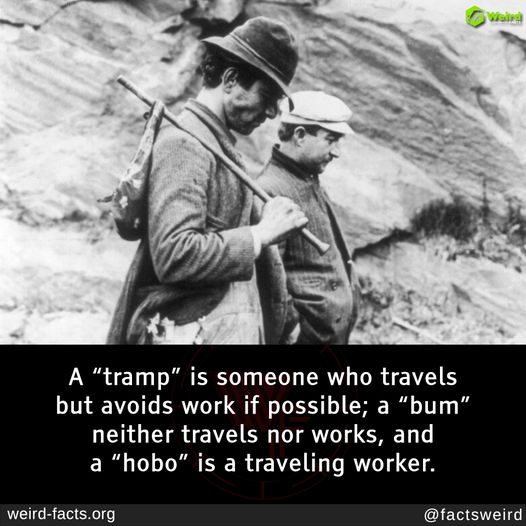
tramp or hobo
The terms “tramp” and “hobo” both refer to individuals who lead itinerant lifestyles, often traveling and living on the fringes of society, but they carry distinct historical and cultural connotations. Here’s a breakdown of their meanings and differences:
Hobo
- Definition: A hobo is a migratory worker who travels to find employment. The term originated in the United States during the late 19th century, particularly after the Civil War, when displaced workers and veterans sought jobs across the growing nation.
- Key Traits:
- Associated with work: Hobos are willing to take on various jobs as they travel.
- Often use trains: Hobos are famously associated with “riding the rails” as a mode of transportation.
- Cultural identity: The hobo subculture has its own codes, traditions, and even symbols (e.g., the hobo code).
- Etymology: The origin of the word “hobo” is uncertain. Some theories suggest it derives from “hoe-boy” (farm workers with hoes) or from railway greetings like “hello boy.”
Tramp
- Definition: A tramp is a traveler who moves from place to place but is less likely to seek or engage in regular work. Tramps often travel for the sake of wandering rather than pursuing employment.
- Key Traits:
- Less tied to work: Unlike hobos, tramps may avoid labor and rely on begging or scavenging.
- Often romanticized: The tramp has been depicted in art and media, most notably in Charlie Chaplin’s “The Tramp,” as a figure of both humor and melancholy.
- Negative associations: Historically, the term “tramp” has carried a more derogatory tone, implying laziness or vagrancy.
- Etymology: “Tramp” comes from the Middle English word trampe, meaning to walk heavily or wander.








